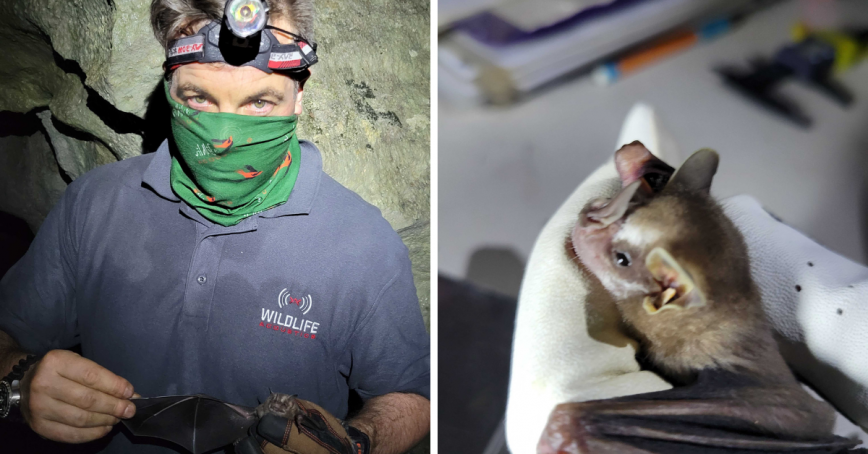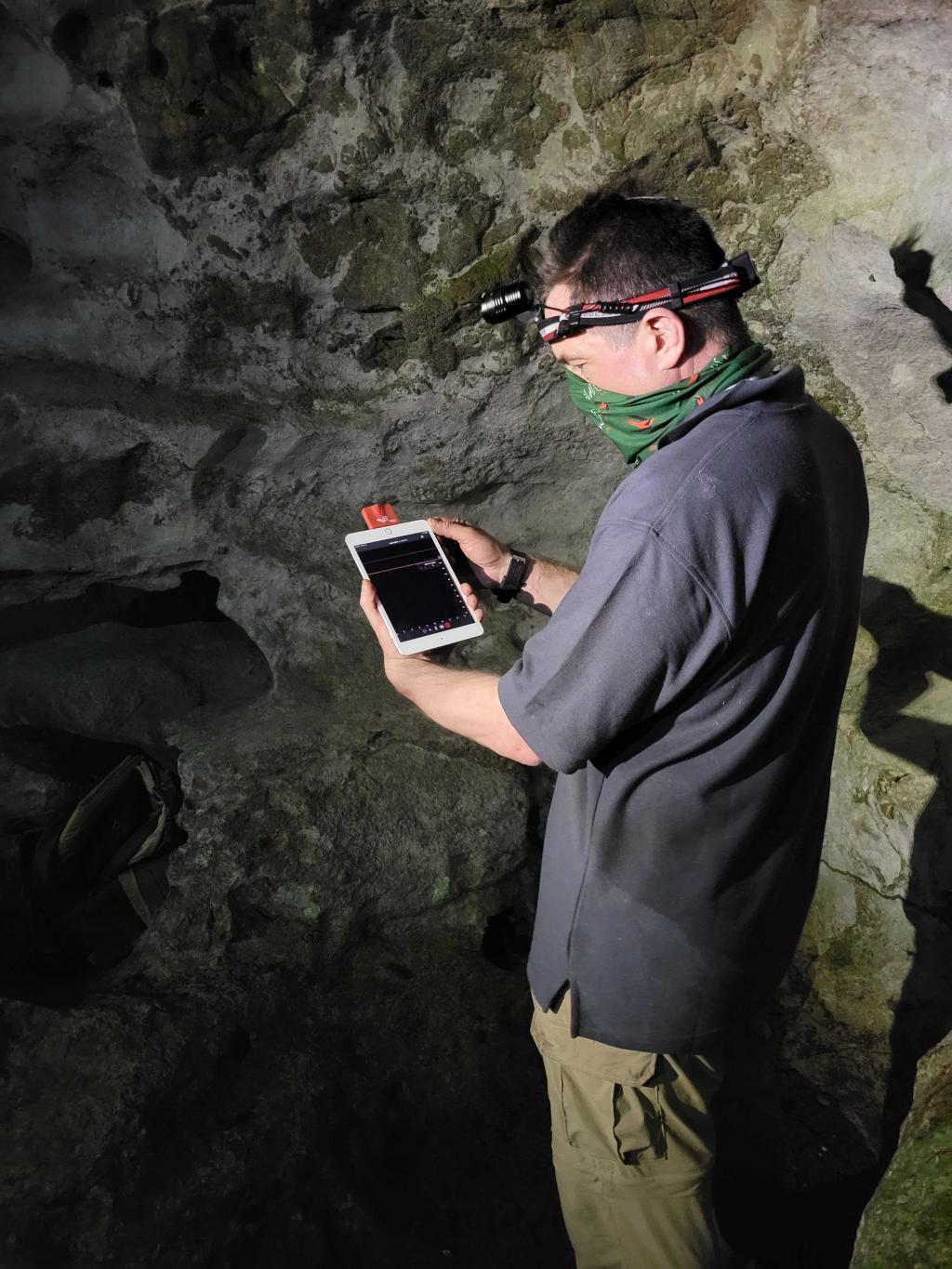Meet Royal Roads’ “Batman”
Topics
Featured
Share online

Gordon Parker, wearing a baby blue leather glove, holds an insectivorous bat in his closed, upturned hand. In a short, slow-motion video, he lifts his thumb and releases the bat. Only the fluttering of its wings is audible.
Bats make sounds, but some are imperceptible to the human ear.
Parker, a Royal Roads’ Master of Science in Environment and Management student, describes the latter as ultrasonic chirps.
“It's going to be above 20,000 hertz,” he says. “Our hearing range goes close to about that level.”
For his master's thesis, Parker went to Belize to conduct acoustic monitoring and ecotoxicological testing and analysis on individual bats, in order to study the effects of agriculture on bats.
A few years ago, Parker also started his own business, called Land-based Learning, and does work with Wildlife Acoustics.
“I’ve been working with Bruce Miller [PhD], a pretty popular bat-specific research biologist who has helped with data analysis and insight of the results. Wildlife Acoustics helped tremendously with the loan of song meters for the research.”
He collected bats through mist net capturing, which uses ultralight nylon mesh between tall poles to trap live bats without injury. He then conducted an ecotoxicological analysis, looking at the presence and effects of toxic chemicals on each bat.
Toxins in bat populations
Parker says North American studies have found numerous agricultural toxins in deceased bats.
“There's been a major interest and decline in our bat species in North America, due to white- nose syndrome,” a fungal disease, he adds.
In addition to the stressors on bat population survival with white-nose syndrome, toxicology research shows bioaccumulation and biomagnification of many toxic substances within the bats themselves upon examination after death, due to environmental pollution.
“When you're finding toxins like that in these insectivorous bats, it's definitely a reflection of the environment around them,” Parker says.
These toxins come from various substances, including pesticides, pharmaceuticals, household chemicals or manufacturing pollution, Parker says.
“It’s coming from everywhere,” he says. “Agricultural activities do play a big role with pesticide and herbicide use, but so do golf courses, and other areas strongly dominated by people using chemicals to beautify an area, kill parasites, kill unwanted plants, and to selectively encourage specific plants to grow.”
Excess chemical pollution flows downstream just like water, Parker says. Chemicals accumulate and often end up in a water source, destroying both aquatic invertebrates, and food supply for fish and aerial insectivores, like bats.
“The problem is that the chemicals are considered useful for two main reasons: to be deadly and persistent.”

“Spying” on bats
For the second part of the study, Parker worked with the Toucan Ridge Ecology and Education Society (TREES), an ecological conservation organization in Belize, to compare the ultrasonic sound activity of bats around an organic farm, a small-scale non-organic farm, and a large-scale non-organic farm. Wildlife Acoustics partnered with Parker, providing him with the latest equipment.
“This is how we spy on the animals,” says Parker.
Using a song meter to record bat vocalization and Kaleidoscope software, wildlife sound analysis software to produce a sound signature and measure wildlife acoustics, he found more ultrasonic bat feeding activity around the organic farm.
Parker explains, “we were able to apply that methodology and find out that there was indeed more bat activity at the organic site than the other sites. And there was a contrast with the variance of the activity at the organic site and the activity at the large scale, non-organic farm. So that was sort of what we expected to see. And it was really interesting to have data come back that reflected what our assumptions were.”
Parker’s research shows there was more bat-feeding activity around the organic farm than the others, due in part to the lack of pesticides. But since there is no environmental lab in Belize to test water or to receive biological tissue samples, Parker is unable to say why the bat activity varied. However, Parker points out, each farm was in the same watershed and near a stand of trees and a running creek or stream.
“So we should expect to see a relative comparison between activity of these bat species and the species richness,” Parker adds. “So finding more activity around the organic farm tells us there are more insects, in general, because these bats are feeding on insects.”
Protecting bats
Parker spent the past 20 years working in the forestry and mining sectors, but he wanted to enhance his career opportunities so he applied to the Master of Science in Environment and Management program at RRU and with his field biologist, he chose to focus on bats.
Efforts to protect bats caught Parker’s attention.
Many bat species are endangered due to human activity. In fact, Bat Conservation International has identified 35 critically endangered species of bats around the world.
“People should care about bats as other animals,” Parker says. “Without bats, we would be lacking balance with our insect populations as many species of bats feed exclusively on insects. Perhaps there may be even more disease with the increased insect population following a diminished bat population. There would be less propagation of many diverse and valued plants, such as fruit plants and even agave, used for making tequila... Bats play a vital role within the ecosystem.”
Documentary next
Parker will be returning to Belize in June with a film crew to make a documentary on his research.
“I’m making this documentary to inform others who aren’t as aware about our ecosystem and the vital role bats have, to bring people together from all walks of life, and to provide opportunities for others to participate with research, data collection, and to inspire others to love their world as much as I do – to see the magnificence, revel in nature, enjoy life and do what they can to help life live all around us.”